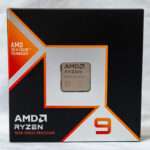On November 29, 2011, PCI-SIG announced PCI Express 4.0, providing a 16 GT/s bit rate that doubles the bandwidth provided by PCI Express 3.0, while maintaining backward and forward compatibility in both software support and used mechanical interface. Additionally, active and idle power optimizations are to be investigated. Final specifications are expected to be released in 2017. Included in the specifications will be an increase in power to the slot from 75W to between 300-500W which would be enough to power a current GeForce 10 series (1080 and Titan) without the need for extra power feeds.
| PCI Express version | Line code | Transfer rate[a] | Throughput[a] | |||
| ×1 | ×4 | ×8 | ×16 | |||
| 1 | 8b/10b | 2.5 GT/s | 250 MB/s | 1 GB/s | 2 GB/s | 4 GB/s |
| 2 | 8b/10b | 5 GT/s | 500 MB/s | 2 GB/s | 4 GB/s | 8 GB/s |
| 3 | 128b/130b | 8 GT/s | 984.6 MB/s | 3.938 GB/s | 7.877 GB/s | 15.754 GB/s |
| 4.0 (expected in 2017) | 128b/130b | 16 GT/s | 1.969 GB/s | 7.877 GB/s | 15.754 GB/s | 31.508 GB/s |
| 5.0 (far future)[28] | 128b/130b | 32 / 25 GT/s | 3.9 / 3.08 GB/s | 15.8 / 12.3 GB/s | 31.5 / 24.6 GB/s | 63.0 / 49.2 GB/s |
The next iteration of the PCI Express standard will officially pass the 1-gigabyte bandwidth mark and knock on the door of 2 gigabytes per second, per lane, per direction. The performance shifts from 3.0 to 4.0 while x16 devices like video cards get a massive headroom increase that will aid in providing the bandwidth needed for next generation virtual and augmented reality. PCI Express is a full-duplex protocol that can send and transfer data at the same time. The speeds listed above are for single direction performance. PCIe 4.0 uses the same encoding scheme as PCIe 3.0.

PCI Express has moved well beyond video cards. Currently, nearly every IO device routes through PCIe to send signals back to the CPU. We expect to see rapid adoption of the new standard for storage and networking products.





Connect External Devices Through A PCIe Cable












